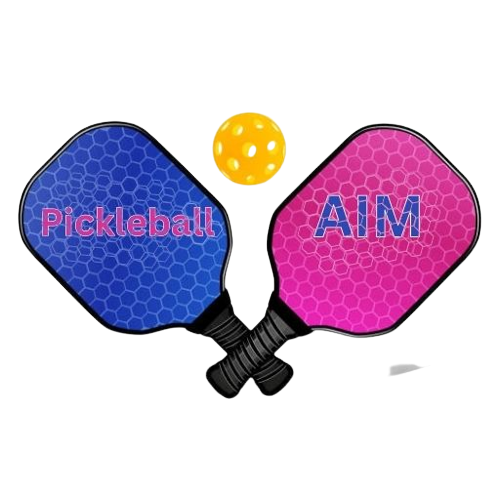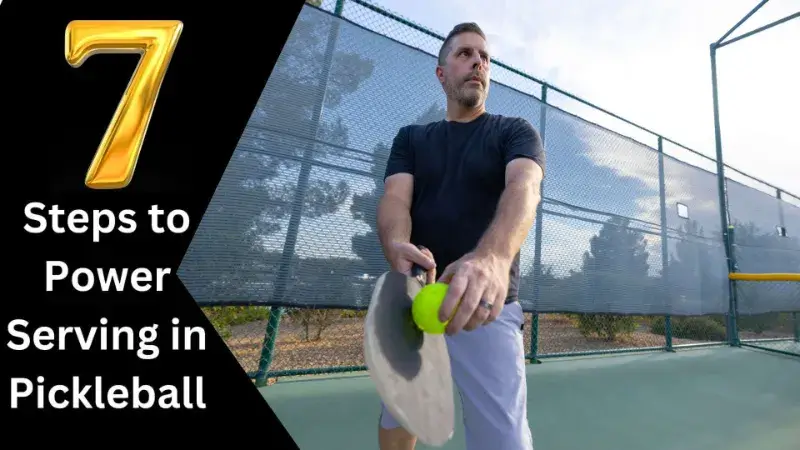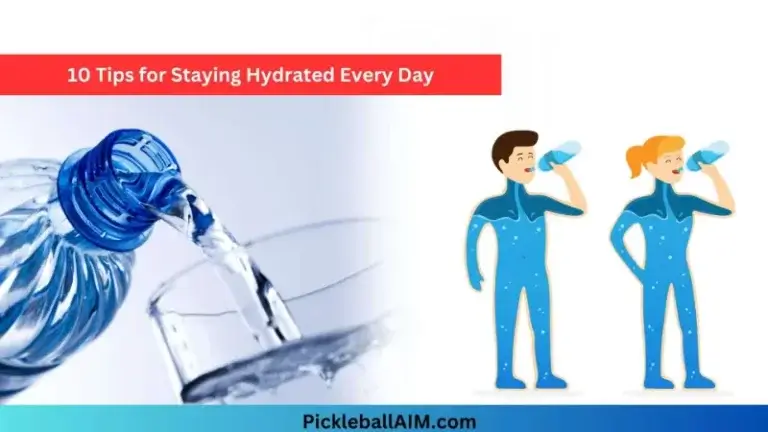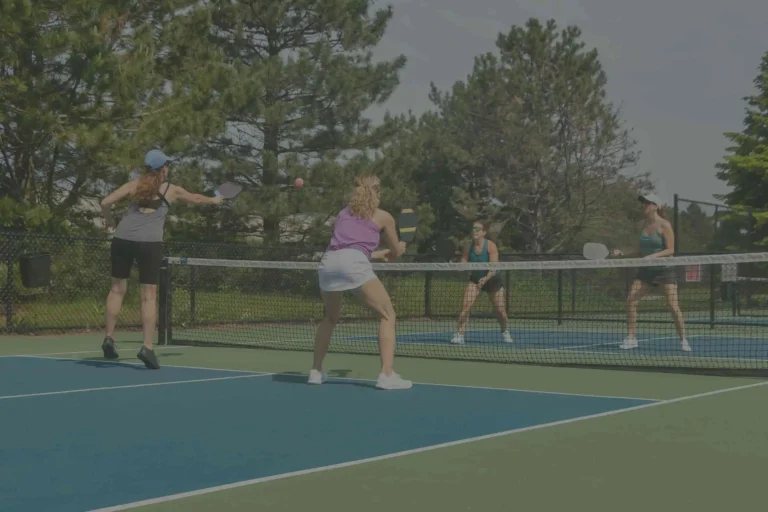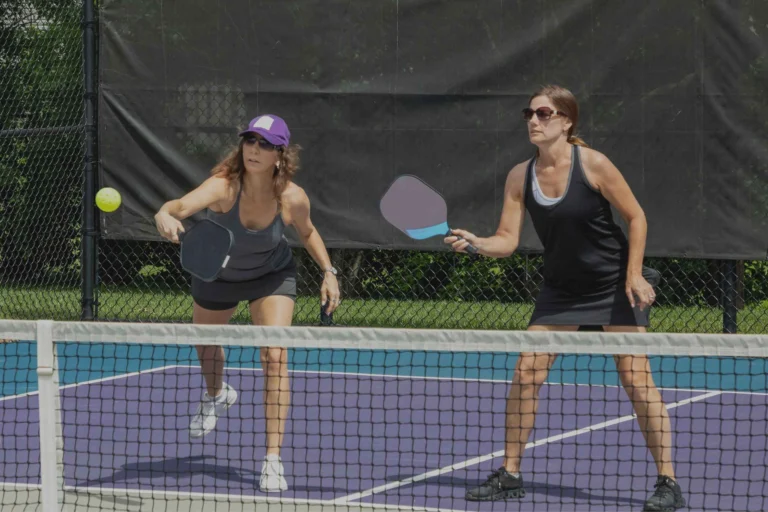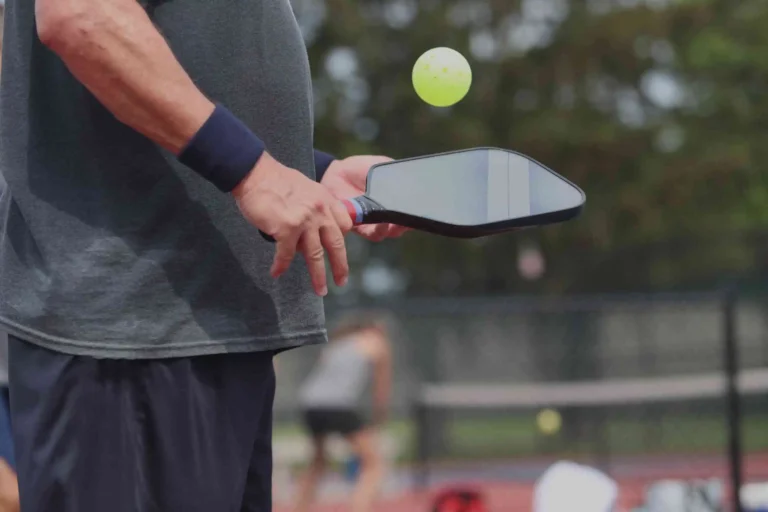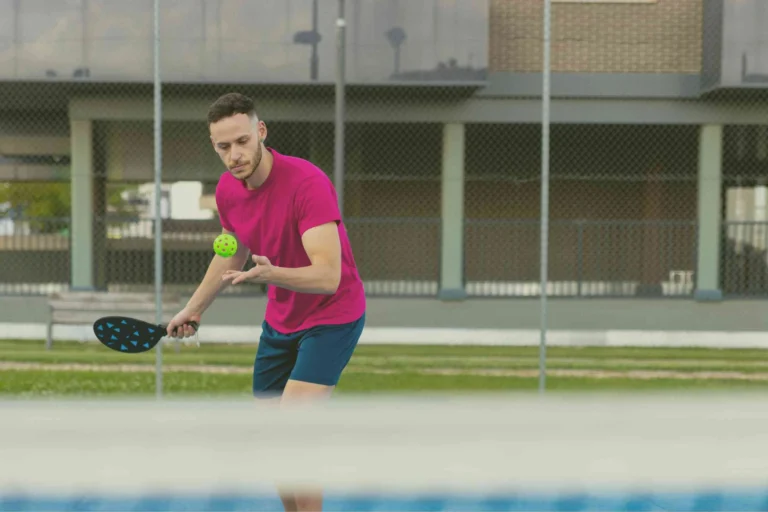7 Steps to Power Serving in Pickleball
Introduction and Power Serving in Pickleball
In the dynamic world of pickleball, serving is your opportunity to take control of the game right from the start. A powerful serve not only puts your opponents on the defensive but also sets the tone for the entire match. Whether you’re a beginner looking to improve your skills or an experienced player seeking to refine your technique, mastering the art of the power serve is a game-changer. In this guide, we’ll break down the 7 essential steps to elevate your serving game in pickleball.
1. Grip and Stance
Paddle Grip
- The grip is the foundation of your serve. Hold the paddle with both hands, ensuring a relaxed but firm grip.
- Your non-dominant hand should be placed higher on the paddle handle, creating a comfortable separation between your hands.
- Your dominant hand should grip the lower end of the handle, providing stability and control.
Stance
- Your stance is crucial for balance and power. Stand with your feet shoulder-width apart.
- Position your body perpendicular to the baseline, with your non-dominant side facing the net.
- Bend your knees slightly to maintain a low center of gravity, which aids in stability and quick movement.
Weight Distribution
- Distribute your body weight evenly between both feet. This balanced stance allows for easy weight transfer during your serve.
- Avoid leaning too far forward or backward, as this can lead to loss of balance and control during the serve.
2. Positioning on the Court
Starting Position
- Begin your serve with both feet positioned behind the baseline.
- According to the official rules of pickleball, at least one foot must remain in contact with the ground behind the baseline at the moment of ball contact.
- This starting position ensures that you are not committing a foot fault, which could result in a faulted serve.
Mid-Court Positioning
- After serving, it’s important to move quickly to a strategic position on the court.
- Transition to the mid-court area, positioning yourself in a way that allows you to respond effectively to your opponent’s return.
- Being prepared to cover both the forehand and backhand sides gives you the advantage of defending against various shot placements.
By focusing on these aspects of grip, stance, positioning, and weight distribution, you’ll be better equipped to execute a powerful serve and gain a competitive edge in your pickleball matches.
3. Ball Placement
Precise Ball Placement
- While holding the ball in your non-dominant hand, ensure it is placed slightly in front of your body.
- The ball’s placement should be within easy reach of your paddle, allowing for a fluid and controlled serve motion.
- Consistency in ball placement is essential for achieving accuracy in your serves.
Control the Toss
- When tossing the ball for your serve, aim for a consistent toss height. This helps ensure that you make contact with the ball at the ideal point in its trajectory.
- Toss the ball upward and slightly forward, allowing it to reach the desired contact point with your paddle.
- Practicing your toss is vital for achieving a consistent and effective serve.
4. Backswing
Generating Power
- The backswing is where you generate power for your serve. As you prepare to serve, rotate your shoulders slightly to load energy.
- Lower your paddle hand during the backswing so that the paddle becomes nearly parallel to the ground.
- This motion helps you harness energy and create a powerful forward motion during the serve.
Maintain Control
- While generating power is crucial, maintaining control is equally important. Avoid an overly aggressive backswing that might sacrifice accuracy.
- Focus on balance and control during the backswing to ensure that you can direct the serve precisely where you intend.
Remember that practice is key to mastering these aspects of serving in pickleball. Regular practice sessions focusing on grip, stance, positioning, ball placement, and backswing will help you refine your serve and ultimately enhance your performance on the court. As you continue to hone your skills, your serves will become increasingly powerful and precise, giving you a competitive edge in pickleball matches.
5. Contact Point
Timing and Height
- Timing your contact with the ball is crucial for an effective serve. Aim to make contact with the ball at the lowest point of its arc.
- The precise contact point varies depending on whether you’re executing an underhand or overhand serve.
- For underhand serves, such as the traditional pickleball serve, contact the ball just below waist level.
- For overhand serves, like the topspin or lob serve, the contact point is closer to chest level.
- Practicing your timing and adjusting your contact point accordingly will improve the consistency and accuracy of your serves.
6. Follow-Through
Completing the Motion
- The follow-through is the finishing touch to your serve and plays a significant role in adding power and accuracy.
- After making contact with the ball, extend your paddle towards the court’s target area with a smooth and controlled motion.
- A complete follow-through ensures that you transfer the energy generated during your backswing and contact point into the serve.
Directional Control
- The direction of your follow-through influences the direction of your serve. For example, if you want to serve diagonally across the court, your follow-through should move in that direction.
- Practice variations of your follow-through to become proficient at directing your serves precisely where you want them to go.
7. Practice and Consistency
Regular Practice
- The key to mastering the power serve in pickleball, like any skill, is consistent practice.
- Dedicate time to serve practice sessions, focusing on each of the steps mentioned above.
- Experiment with different types of serves, such as topspin, slice, or flat serves, to become versatile in your serving approach.
Confidence Building
- The mental aspect of serving is just as crucial as the physical. Build confidence in your serves by visualizing successful serves and maintaining a positive mindset.
- Confidence leads to consistency, and consistent serves are often the most powerful.
By mastering these seven steps and incorporating them into your pickleball practice routine, you’ll gradually enhance your serving skills. Remember that improvement takes time and effort, so stay patient and persistent in your pursuit of a powerful and precise serve. As your serving game continues to evolve, you’ll find yourself with a valuable advantage on the pickleball court, ready to make each serve a game-changer.
Bonus Tip: The Mental Game
Focus and Visualization
- The mental aspect of serving is often underestimated but is equally essential. Maintain your focus on the target area where you want to place your serve.
- Visualization can be a powerful tool. Before each serve, visualize a successful outcome, seeing the ball land precisely where you intend it to.
Confidence
- Confidence in your serving abilities can be a game-changer. Believe in your skills and your ability to execute a strong serve.
- When you step up to serve, project an air of confidence. It can affect not only your performance but also your opponent’s perception of your skills.
Stay Calm Under Pressure
- Serving during a crucial point or match can be nerve-wracking. Practice keeping a calm demeanor during high-pressure situations.
- Controlled breathing and maintaining a composed mindset can help you deliver a powerful serve even when the stakes are high.
Conclusion
Mastering the power serve in pickleball is a journey that combines physical skill, mental preparation, and consistent practice. These seven steps, coupled with a focus on the mental game, provide a comprehensive roadmap to elevate your serving abilities. Remember that improvement takes time, and the path to a powerful serve is one of continuous learning and refinement.
As you put in the effort and dedication to your serve, you’ll find that it becomes a potent weapon in your pickleball arsenal. A well-executed serve can set the tone for the game, keep your opponents on their toes, and give you the upper hand. So, step onto the pickleball court with confidence, apply these steps to your serve, and get ready to take your game to the next level, one powerful serve at a time.
